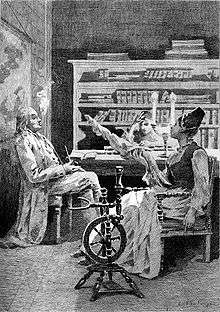Séraphîta

Séraphîta (French pronunciation: [seʁafita]) is a French novel by Honoré de Balzac with themes of androgyny. It was published in the Revue de Paris in 1834. In contrast with the realism of most of the author's best known works, the story delves into the fantastic and the supernatural to illustrate philosophical themes.
In a castle in Norway near the fjord Stromfjord, Séraphitüs, a strange and melancholic being, conceals a terrible secret. Séraphitüs loves Minna, and she returns this love, believing Séraphitüs to be a man. But Séraphitüs is also loved by Wilfrid, who considers Séraphitüs to be a woman (Séraphîta).
In reality, Séraphitüs-Séraphîta is a perfect androgyne, born to parents who by the doctrines of Emanuel Swedenborg have transcended their humanity, and Séraphitüs-Séraphîta is the perfect example of humanity.
Ruggero Leoncavallo wrote a symphonic poem based on the story.
An early drawing of Paul Gauguin's Oviri ceramic sculpture bears the inscription "Et le monstre, entréignant sa créature, féconde de sa semence des flancs généreux pour engendrer Séraphitus-Séraphita" (And the monster, embracing its creation, filled her generous womb with seed and fathered Séraphitus-Séraphita), referencing the novel.[1]
In 2010–2011 Ouriel Zohar staged Seraphita, his adaptation with Barbara Heman, performed in Paris at the "Theatre de l'Ile Saint-Louis", Brussels, Greece, and Republic of Congo. In 2012 he staged it in the Maison de Balzac, Paris, Haifa, Greece, Switzerland, Istanbul and "Theatre Darius Milhaud" in Paris. In 2014 his theater went to India with his 2 shows: "Message to Materialistes" and "Seraphita".
References
- ↑ Frèches-Thory p. 371
Sources
- Frèches-Thory, Claire (1988). "The Return to France". The Art of Paul Gauguin. with Peter Zegers. National Gallery of Art. pp. 369–73. ISBN 0-8212-1723-2. LCCN 88-81005.